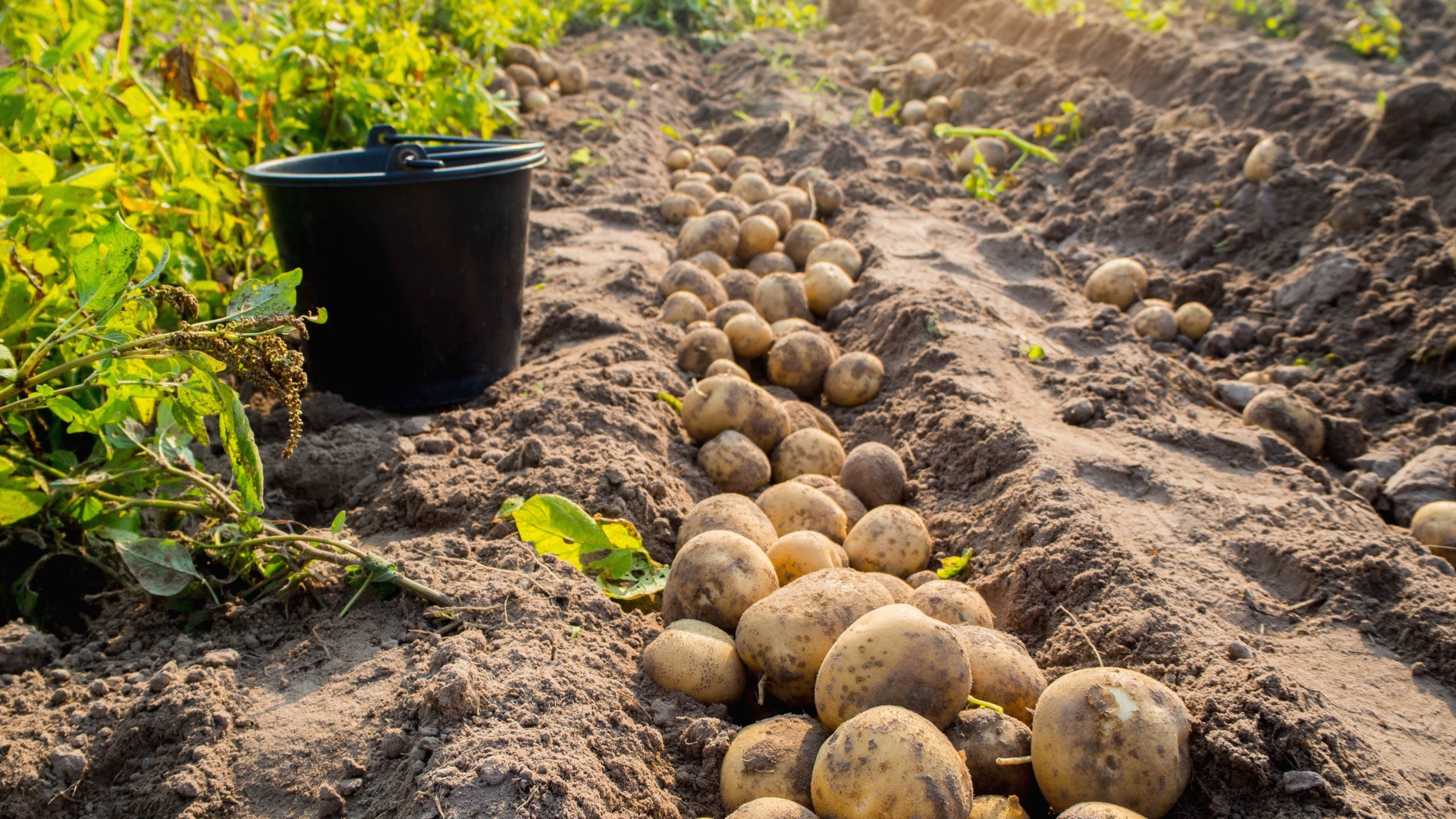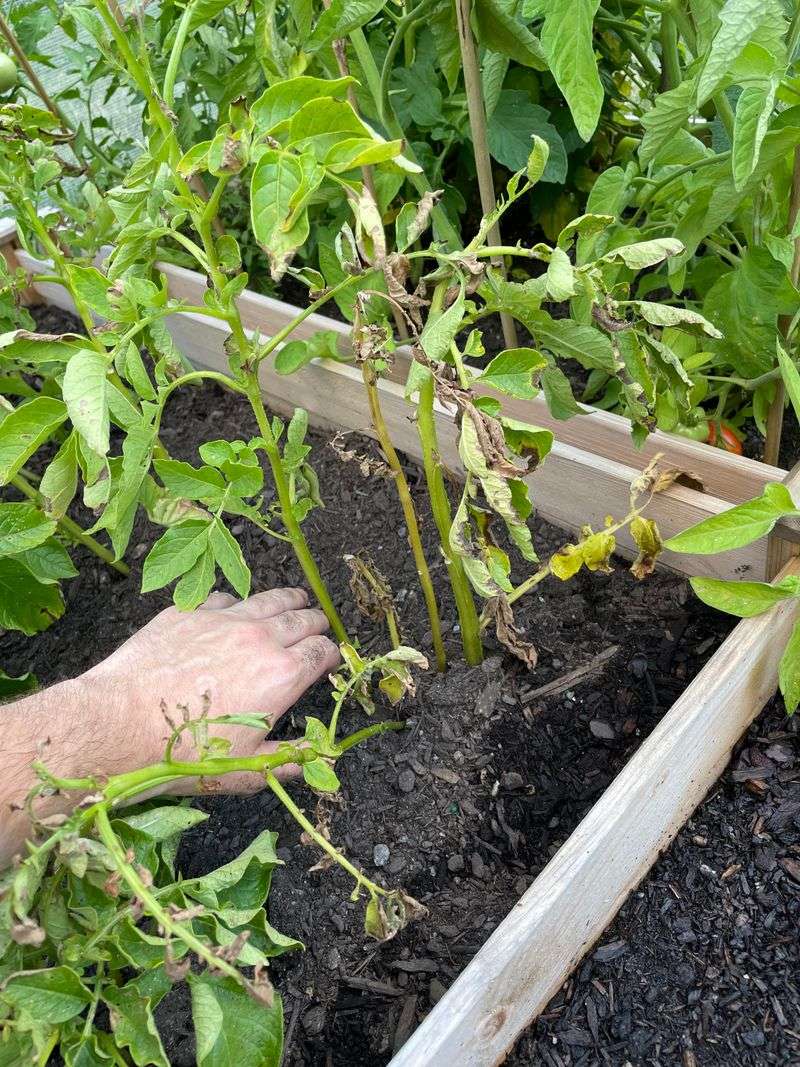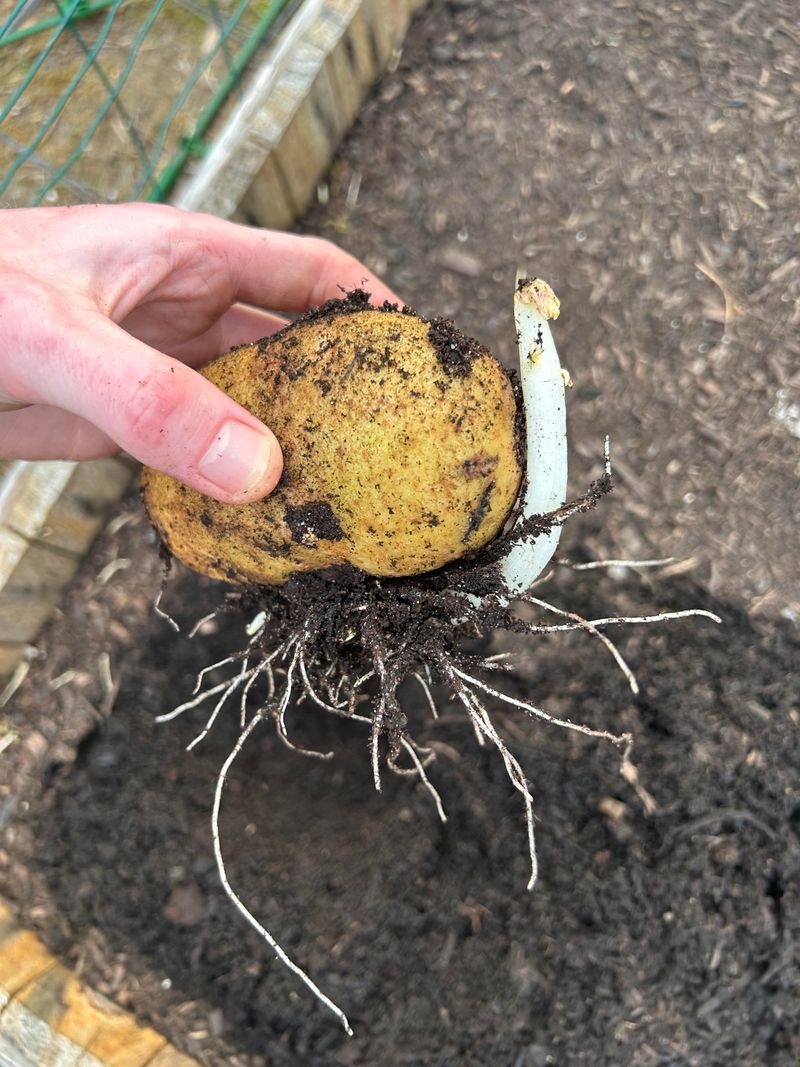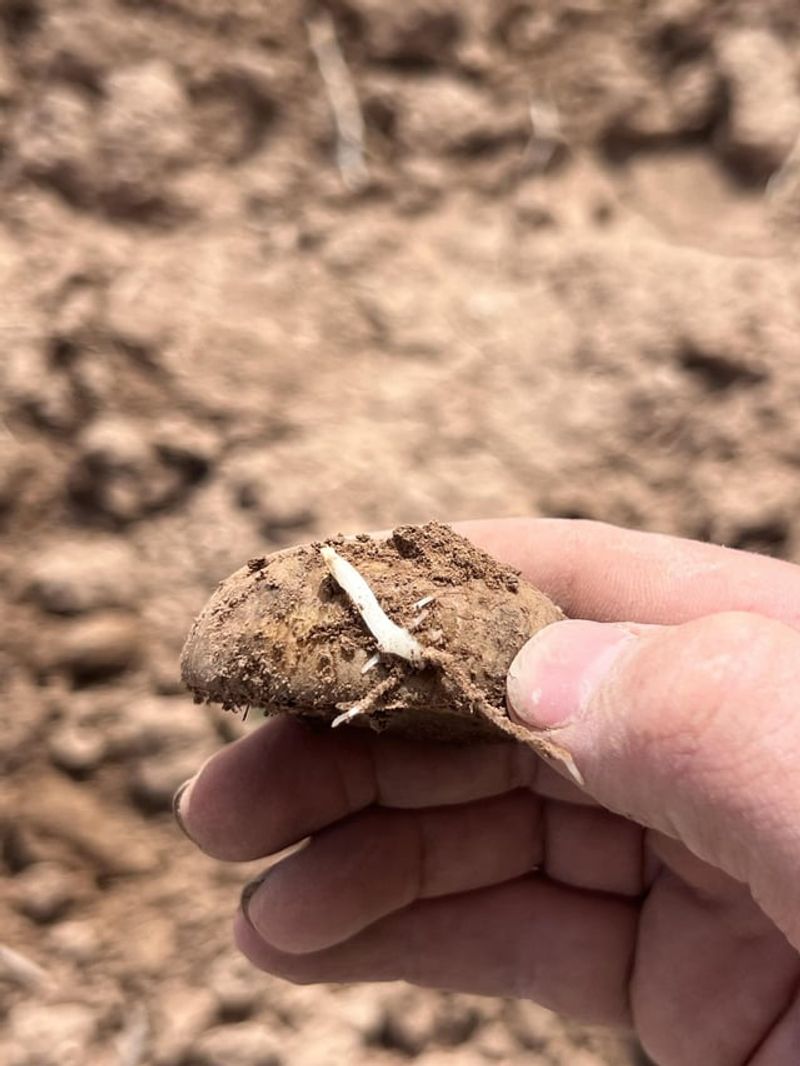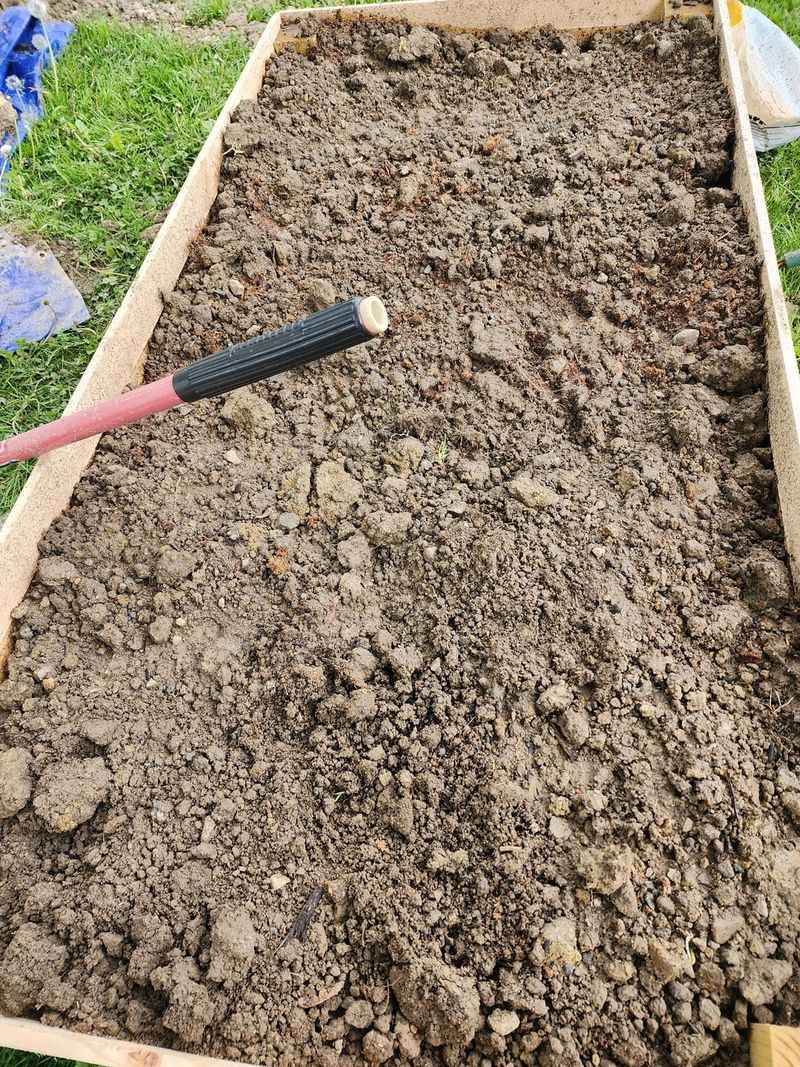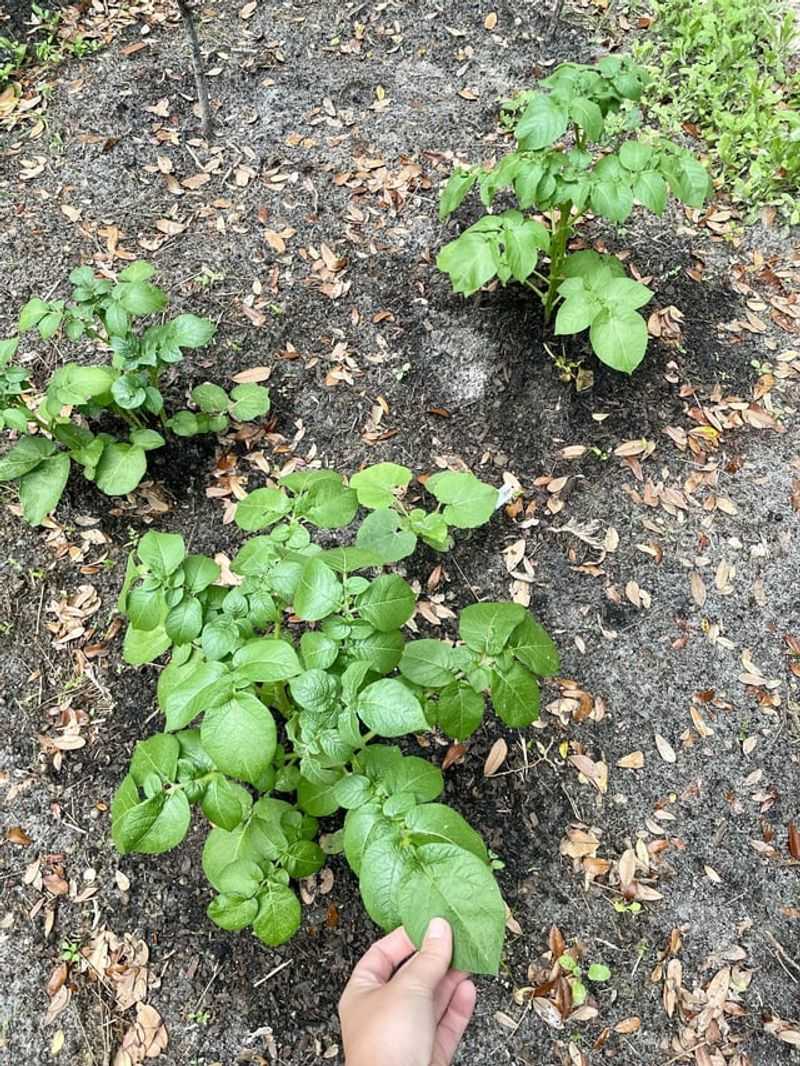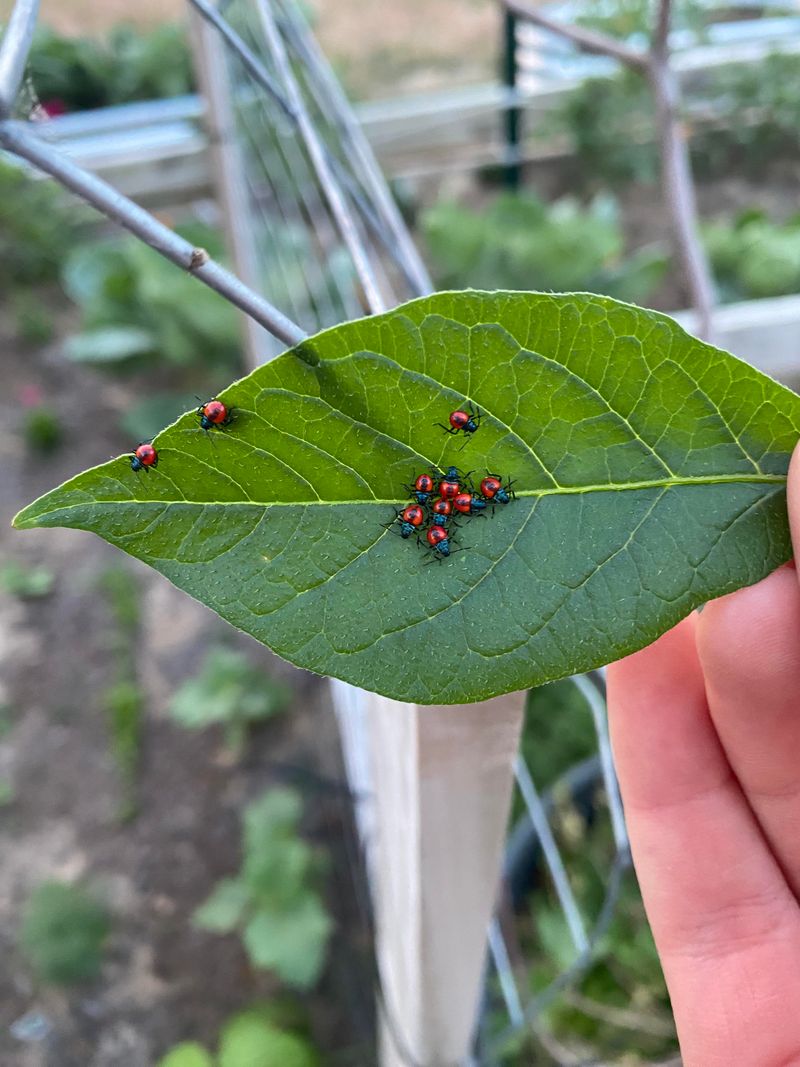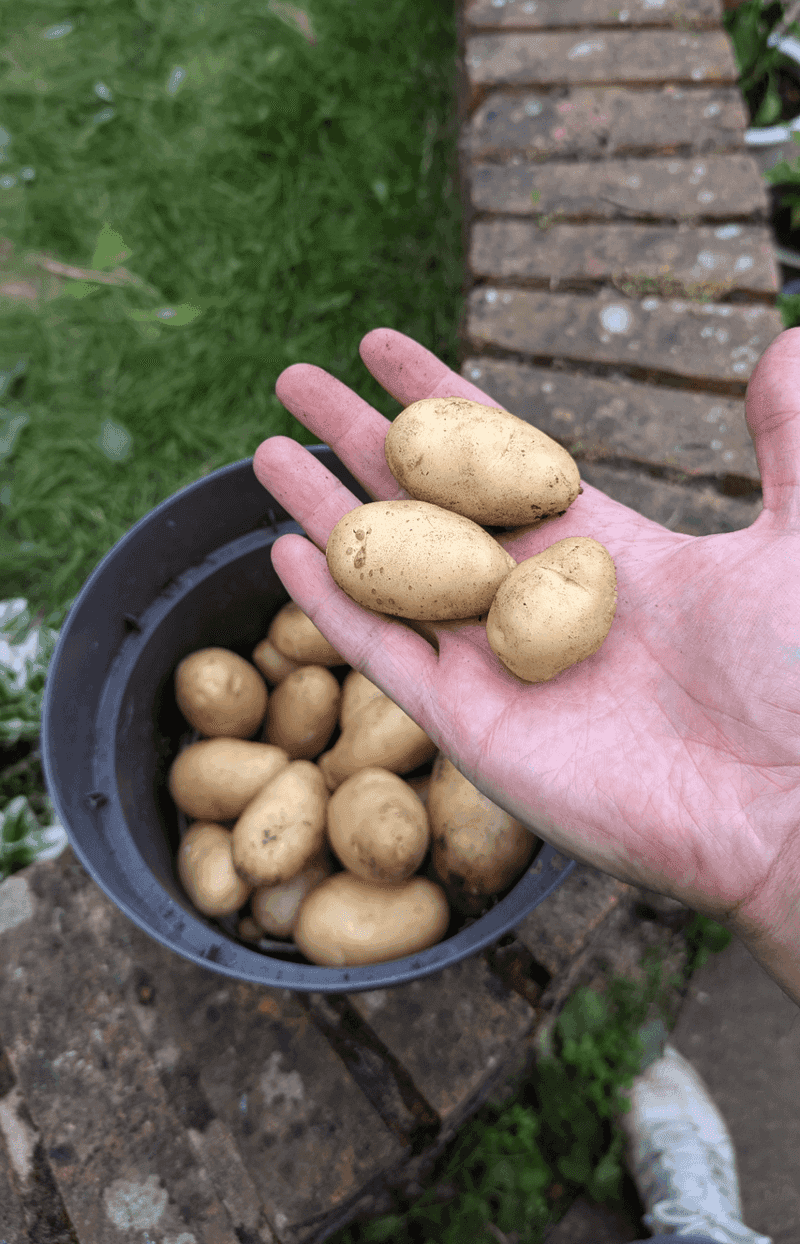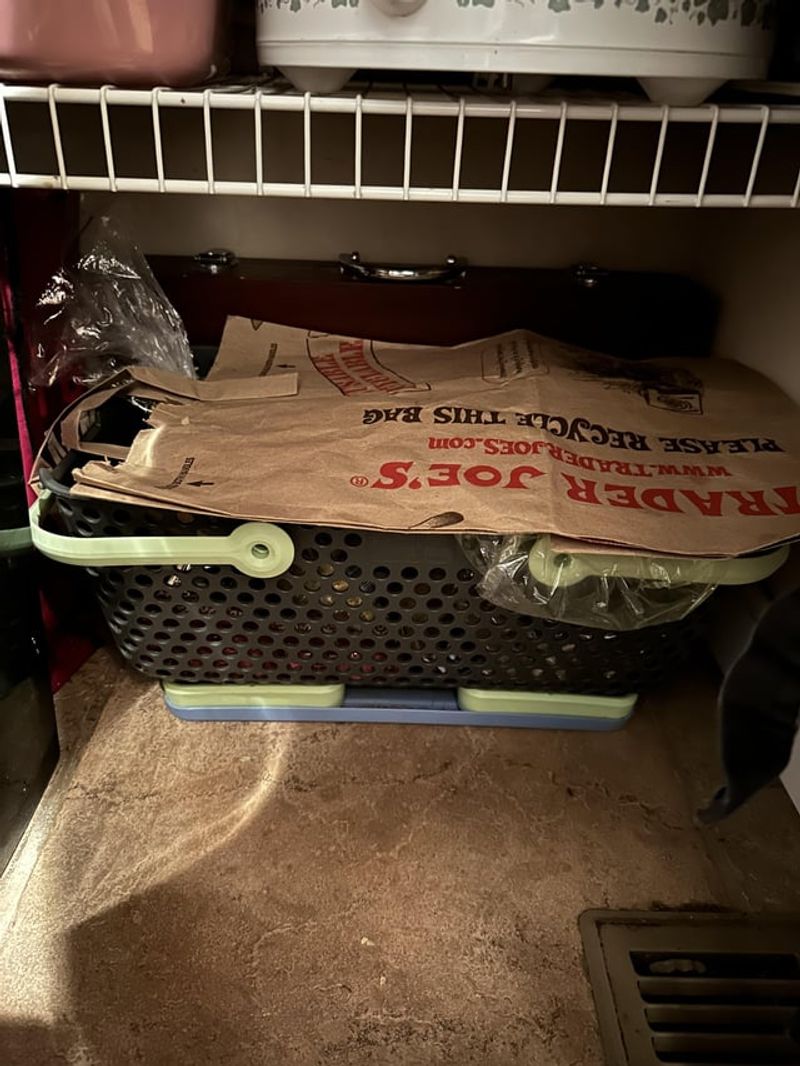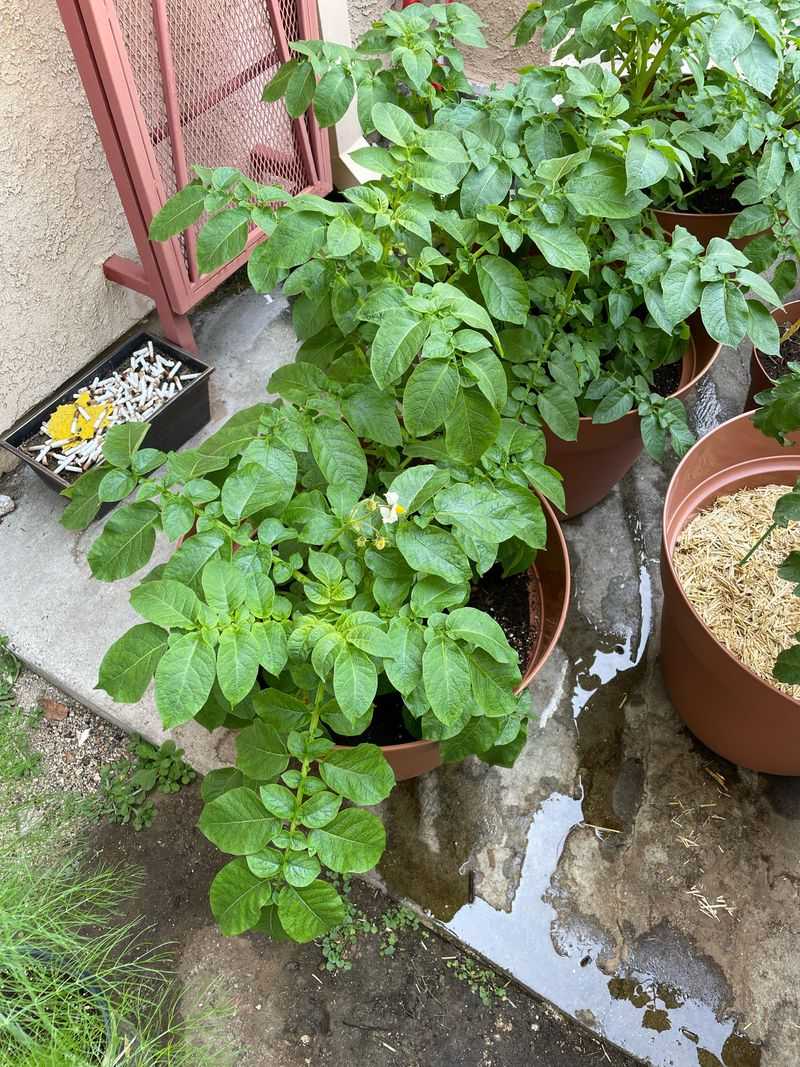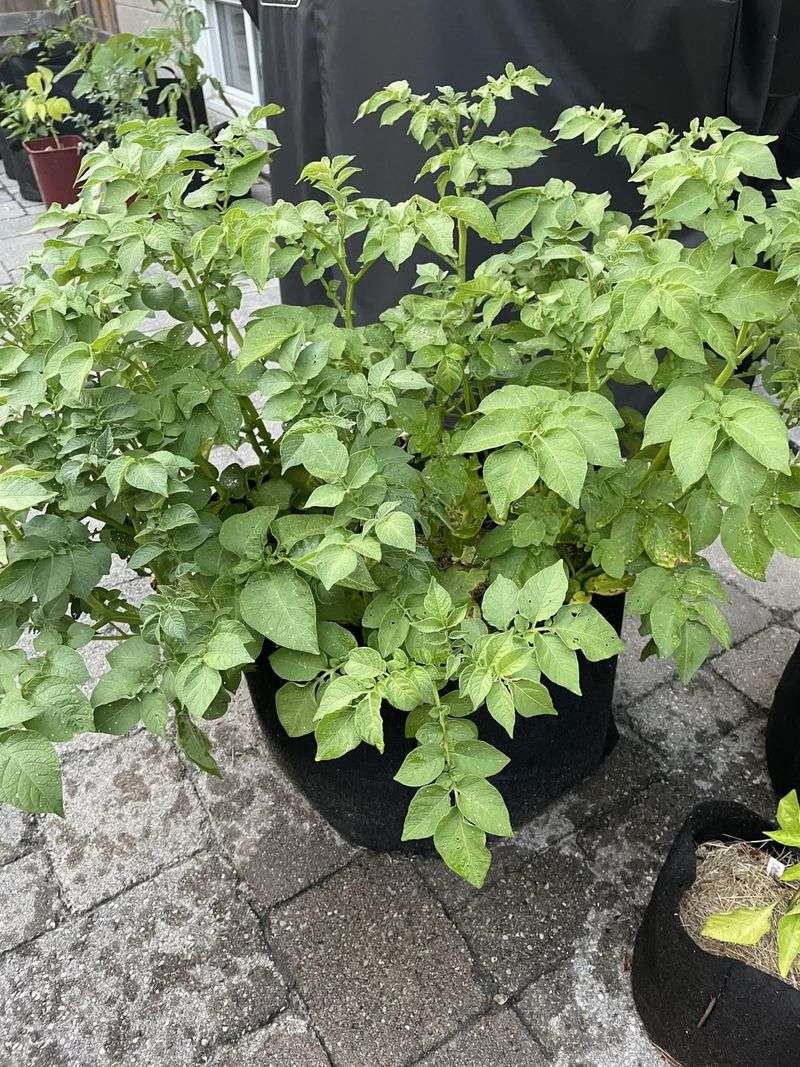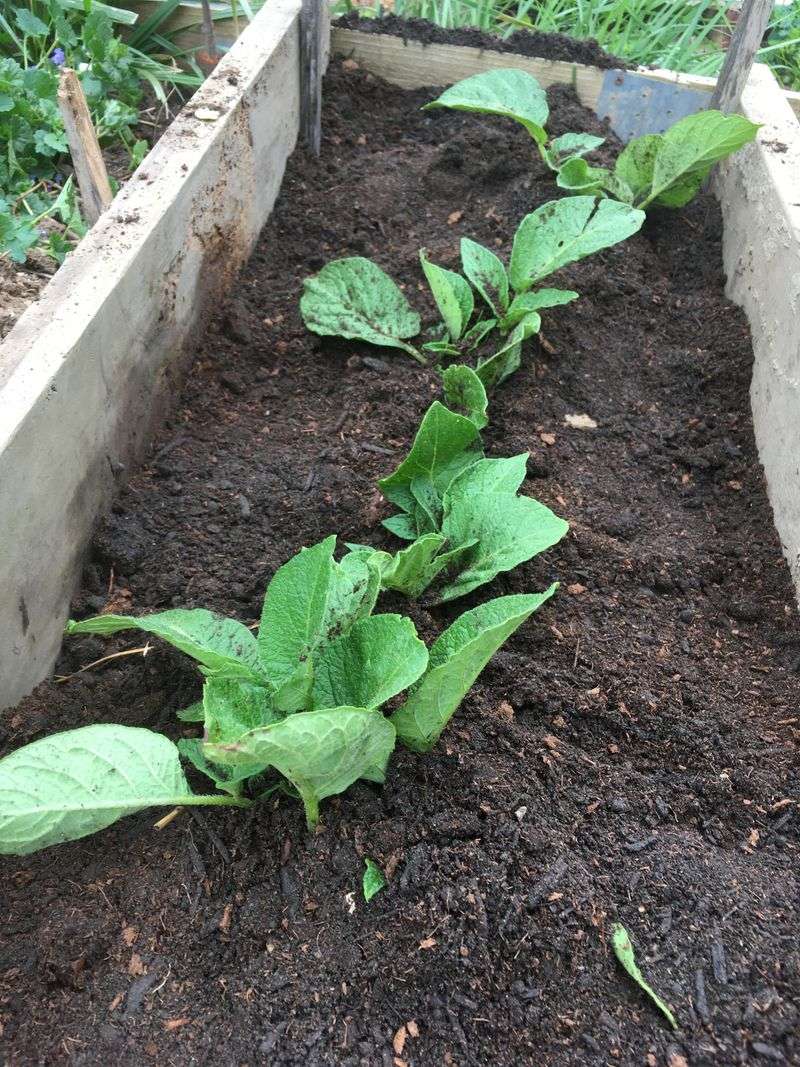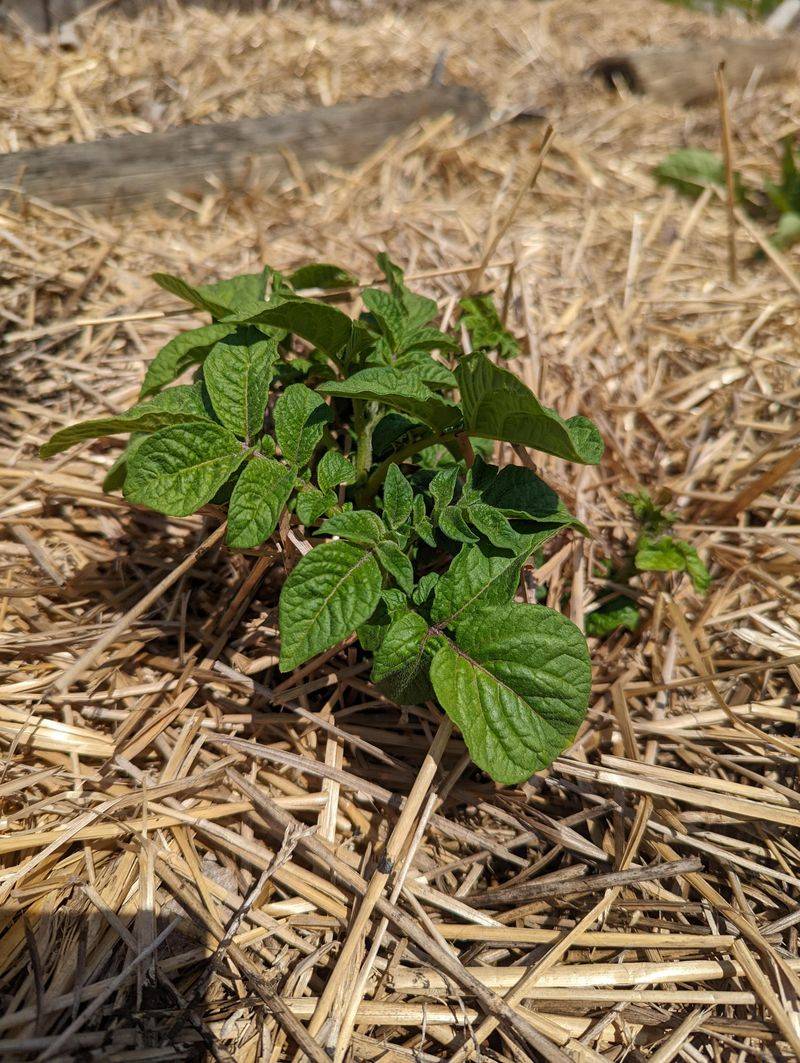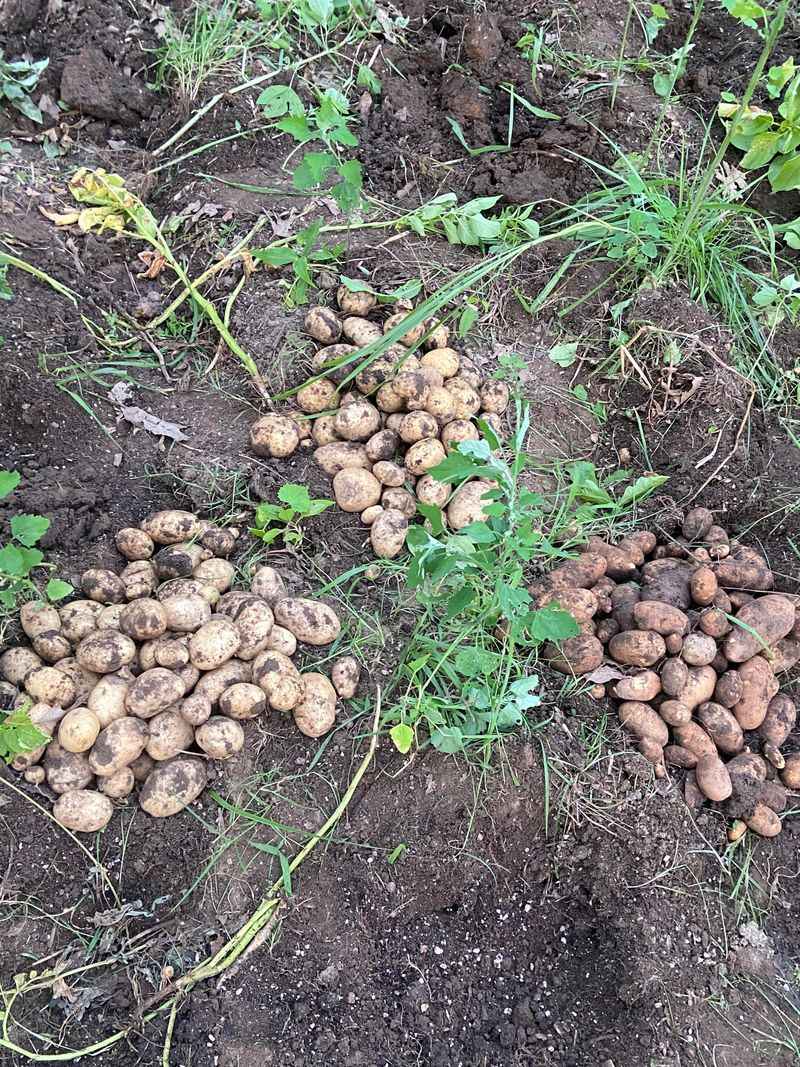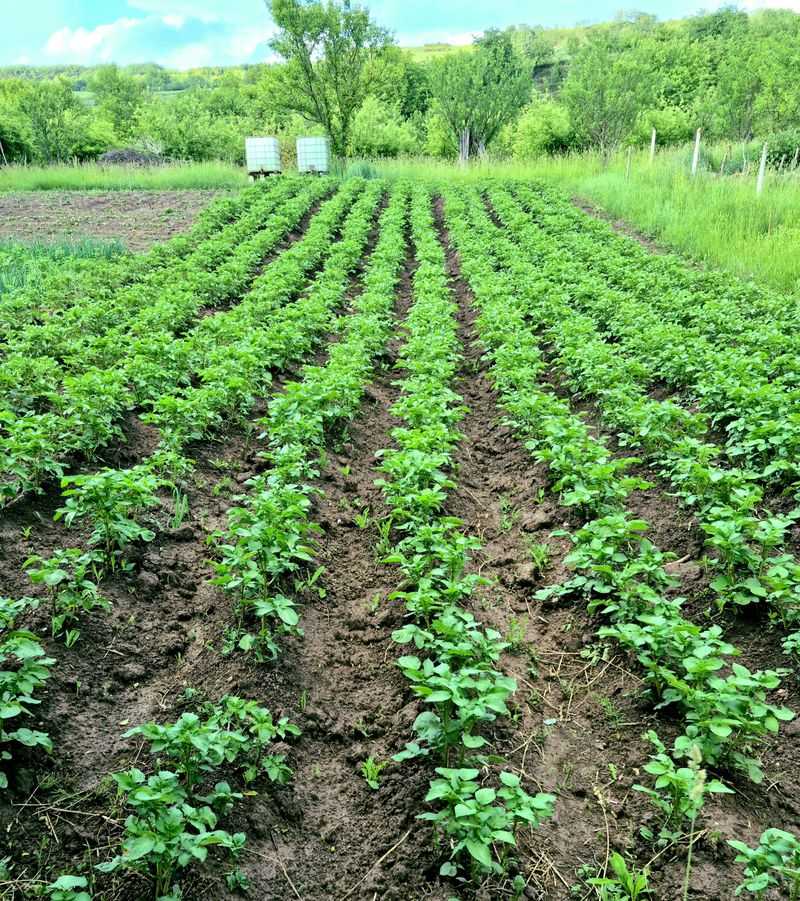Potatoes are one of the most rewarding crops to grow, but they can be tricky if you’re not careful. From planting to harvesting, there are a few common mistakes that can hold back your crop’s potential.
Luckily, with a little knowledge, you can avoid these missteps and enjoy a bumper harvest. In this guide, I’ll walk you through the most common potato mistakes and how to avoid them for a better yield.
Let’s make sure your spuds are the star of the garden this season!
1. Overwatering Potatoes
Watering potatoes too much can lead to soggy soil and rotting tubers. If your potato plants seem droopy or yellow, you might be overwatering them.
Adjust by letting the soil dry a bit between waterings. Ensure the pots have good drainage and avoid standing water. Feel the soil; it should be moist, not soaked. If caught early, your plants can recover and grow strong again.
Keeping an eye on the weather can also help manage water needs. Remember, consistent care is key to healthy potatoes.
2. Planting Potatoes in the Wrong Season
Potatoes thrive in specific conditions, and planting them in the wrong season can hinder their growth. If planted too early in cold soil, they may not sprout well.
Check your local climate for the right planting time. Typically, potatoes do best in cool, frost-free weather. Be mindful of the temperature and avoid planting during extremes.
Waiting for the right time ensures your potatoes have the best chance to flourish. A little patience goes a long way in gardening!
3. Using Poor Quality Seed Potatoes
Starting with bad seed potatoes can doom your crop from the start. Look for certified seed potatoes that are firm and sprout-free.
Avoid using store-bought potatoes, as they might carry diseases. Good seed potatoes are essential for a healthy harvest. They set the foundation for strong plant development.
Investing in quality seeds means fewer problems down the line. Research local suppliers known for disease-free stock. Healthy seeds lead to a bountiful potato crop.
4. Ignoring Soil Preparation
Skipping soil preparation is a common oversight. Potatoes need loose, fertile soil to grow well. Compact soil can stunt growth and yield poor results.
Spend time tilling and enriching the soil with compost. This improves drainage and provides nutrients. A well-prepared bed means happier potato plants.
Testing soil pH can also guide adjustments. Aim for slightly acidic soil for optimal growth. Proper groundwork makes a big difference in the end harvest.
5. Crowding Potato Plants
Giving potatoes enough space is crucial for their health. When plants are crowded, they compete for nutrients, water, and sunlight.
This can lead to smaller tubers and increased disease risk. Space your plants 12 inches apart in rows. This allows room to grow and air circulation.
Healthy spacing leads to stronger plants and better yields. Planning your garden layout makes a noticeable impact. More space means more potatoes to enjoy!
6. Ignoring Pests and Diseases
Pests and diseases can quickly ruin a potato crop if unnoticed. Regularly check plants for signs of trouble, such as chewed leaves or discolored spots. Use natural pest control methods and resistant varieties. Being proactive can save your potatoes from disaster.
Early detection means easier management. Keep your garden clean to minimize risks. Healthy plants are more resilient to threats. Stay vigilant and act quickly to protect your potatoes.
7. Harvesting Potatoes Too Early
Impatience can lead to harvesting potatoes too soon. Let them mature fully for the best size and flavor. Once the leaves turn yellow and die back, it’s time to harvest.
Check for firm, well-formed tubers. Waiting ensures maximum yield and taste. Timing is key to harvesting success.
Resist the urge to dig up plants early. Patience pays off with delicious potatoes. Enjoy the fruits of your careful cultivation!
8. Storing Potatoes Incorrectly
Storing potatoes improperly can lead to spoilage. Keep them in a cool, dark, and dry place. Light exposure causes greening, making potatoes bitter and unsafe to eat. Use breathable bags or containers for storage.
Avoid refrigerating as it affects taste. Proper storage extends shelf life and quality. Monitor conditions and separate damaged ones.
A little attention goes a long way in maintaining freshness. Enjoy your potatoes for longer with these simple tips.
9. Using Too Much Fertilizer
Over-fertilizing can damage potato plants. It leads to excess foliage and poor tuber formation. Follow recommended guidelines for balanced nutrition. Less is often more in gardening. Regular soil tests help adjust fertilizer use.
Give plants a chance to absorb nutrients naturally. Healthy growth comes from moderation and care. Avoid common mistakes by being mindful of plant needs. Proper fertilization ensures robust potatoes with minimal effort.
10. Skipping Crop Rotation
Growing potatoes in the same spot every year invites diseases. Crop rotation breaks this cycle, improving soil health.
Plan your garden to change plant locations annually. This practice reduces pest build-up and nutrient depletion.
A simple switch works wonders. It promotes a thriving garden ecosystem. Enjoy healthier plants by rotating crops regularly. Diversity in planting leads to resilient growth.
11. Planting Potatoes Too Deeply
Planting potatoes too deep can hinder their sprouting. Seed potatoes should be 4 inches deep in the soil. This allows for proper growth and tuber development. Correct depth ensures plants can emerge easily.
Follow guidelines for planting depth to help your potatoes thrive. Optimal planting leads to vigorous plants. Empower your garden with the right techniques. Grow luscious potatoes with these smart strategies.
12. Not Hilling Potatoes
Hilling potatoes involves piling soil around the base of plants as they grow. This supports tuber development and prevents greening.
Neglecting this can expose potatoes to light and pests. Regular hilling protects your crop and enhances growth.
Encourage bigger yields with this simple method. It’s a must for any potato grower. Consistent care yields satisfying results.
13. Neglecting to Mulch
Mulching helps retain soil moisture and suppress weeds. Without it, your potatoes may struggle in dry conditions.
Apply organic mulch like straw or leaves around plants. This keeps the soil cool and conserves water. Mulching is a simple way to boost plant health.
14. Using the Wrong Soil Type
Potatoes prefer sandy, well-drained soil. Heavy clay soil can cause waterlogging and poor growth. Amend soil with organic matter to improve texture.
Proper soil ensures healthy roots and tubers. Adapt your gardening practices to suit plant needs. Good soil management is key to successful harvests.
15. Forgetting to Weed
Weeds compete with potatoes for nutrients and space. Regularly removing them keeps your garden tidy and productive. Hand-pull or hoe weeds before they spread.
Consistent weeding ensures your potatoes receive ample resources. A clean garden promotes vigorous growth. Make weeding a regular part of your routine. Enjoy a flourishing harvest without pesky invaders.

